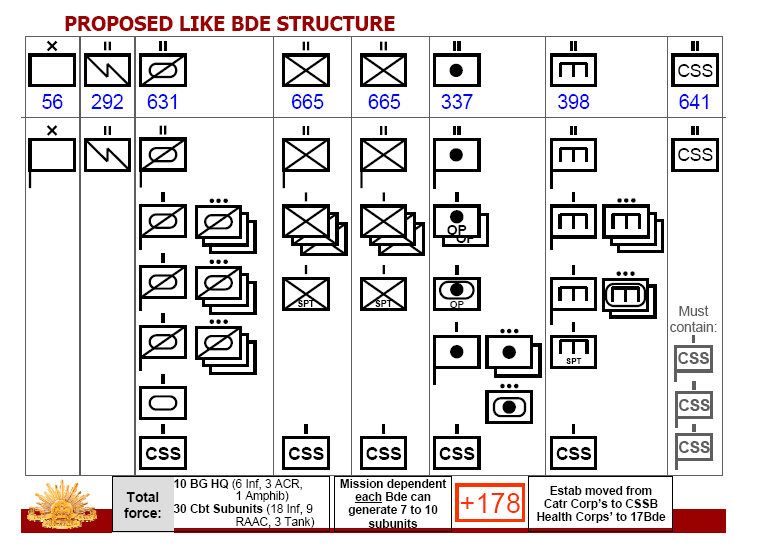LOL! 3 para bn,s....why? When was the last real use of parachute insertion that went right?
Grenada? Remember that parachuteing into a battle field is very risky buisness. Once on the ground, para,s are lightly armed, and only have a very limited resup capability. To have 3 of these units in a 9 Bn division is madness that cant be supported logisticly by the ADF.
2Commando can do the point of entry thing, and heavier infantry that can be resupped then take over, and the commando,s can then concentrate on doing what they do best. The days of para,s infiltrating behind enemy lines to disrupt them, are over. Now that we have a commando unit, i tend to think that a QRF of air mobile bns makes much more sence. combine them with mech inf, SF and cav, and you do have a force to be reckoned with. Para,s are usually tougher than normal infantry, because we walk further and carry heavier loads than the other bns, also we were very close, because we only had the 1 bn, so that means you could spend your whole career at 3 RAR, where normal infantry move around. So being so tight, the "pretenders" are already known, and weeded out early in their career.(most of the time).
We,re a pack of bastards, bastards are we, we are from 3 RAR the A--seholes of the Royal Australian Infantry.....that song go,s back to the occupation force in Japan, when 67bn AIF became 3RAR.


